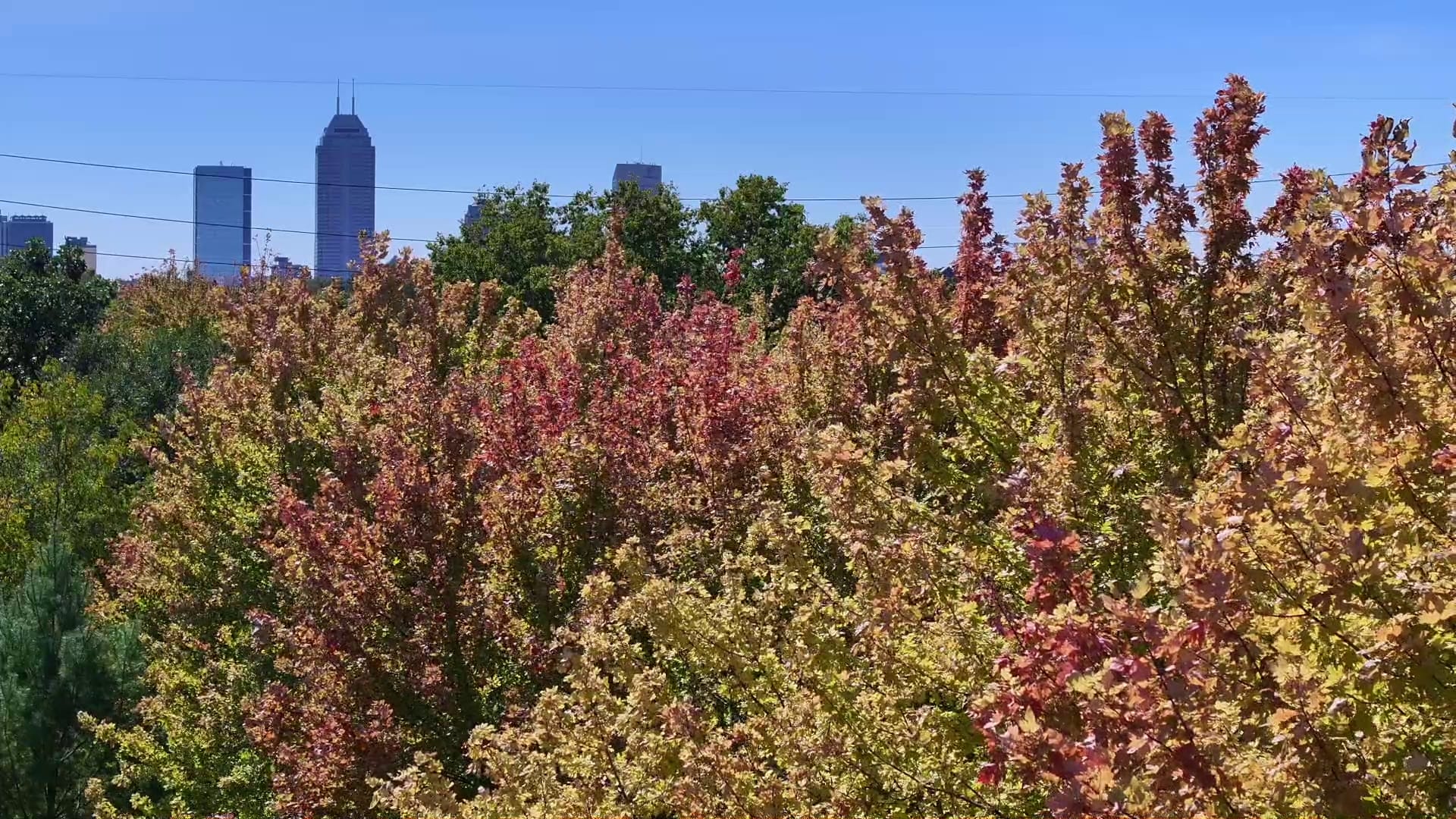Muted fall colors in central Indiana likely
As Central Indiana recovers from drought conditions, one noticeable impact has been the delay and muting of the vibrant fall colors we usually see this time of year. While last weekend’s rain offered temporary relief, the months of dry weather have already taken their toll on the region’s trees. The lack of consistent moisture has caused some trees to prematurely drop their leaves or show less vivid color transitions. Although some areas are seeing hints of fall color, the overall display may be less brilliant and shorter-lived compared to typical years.

Drought can affect fall color in several ways. The most important factor is moisture levels. When trees are stressed by drought, they conserve water by shedding leaves earlier in the season, which cuts short the period when leaves would normally change color. Additionally, drought impacts the production of pigments like anthocyanins, responsible for the reds and purples in leaves. Without sufficient water, these pigments may not develop as vibrantly, leading to more muted hues. As a result, what should be a colorful landscape in October might instead appear dull or uneven, with patches of bare trees.

Despite these challenges, early October is still a prime time for certain trees to begin their color transformation in Central Indiana. One of the most iconic trees showing color now is the Sugar Maple, known for its brilliant orange and red hues. This tree is often a favorite among fall enthusiasts, but drought conditions may make its colors less intense this year. The Red Maple is another early-changing tree that usually turns deep red, although drought might limit this vibrancy. Finally, the Sassafras tree offers a mix of yellow, orange, and red shades, adding variety to the fall palette. However, like the others, its colors may be less pronounced due to the dry weather.
The Quaking Aspen, though less common in Central Indiana compared to northern regions, can still be found in some areas, particularly in parks and more forested zones. Its leaves typically turn a vibrant yellow, creating a stunning contrast against the landscape. However, like many other trees, the lack of water from the drought can dull this yellow, causing the color change to appear less vibrant and shorter in duration.

Even though the drought has muted the overall color display, there are still opportunities to appreciate fall in Central Indiana. Walking through parks or nature trails can reveal pockets of color where trees have received more moisture, and some evergreens continue to thrive. To protect trees and landscapes during dry spells, it’s important to practice good watering habits and take steps to conserve water throughout the fall season.
As we move forward, the long-term outlook suggests that continued dry weather could limit fall color even further. While we may still see some bursts of color as conditions change, this fall will likely be remembered as one of the more subdued seasons for leaf watchers in Central Indiana.

